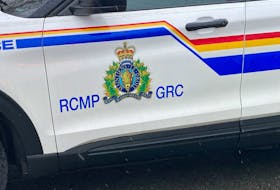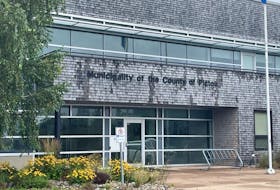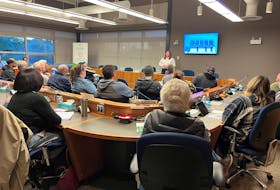
“Getting to meet all these really cool people – I have friends from all over Australia now,” he says, adding that he really enjoyed meeting other like-minded people.
Lees, a Grade 11 student at Northumberland Regional High School, got the chance to go to the conference after winning the National Youth Science Forum Award at the Canada-Wide Science Fair held in May.
The National Youth Science Forum mixes science-related activities with social events and early career networking, giving participants an understanding of what science-related careers are possible after graduation from high school.
Other highlights of the trip for Lees included visiting a NASA tracking station, and via a Skype call, talking with a scientist from the world’s largest laboratory, CERN. Located in Switzerland, it provides the infrastructure needed for conducting physics research, such as a large hadron collider.
“Definitely talking to the scientist from CERN was a big highlight for me. It’s an experience you don’t get to have every day,” says Lees. “I got to ask a few questions – it was a really neat experience. It was really cool to hear about all of the opportunities in science.”
During his visit to the NASA tracking station, scientists were speaking with Voyager, the space probe that is studying the outer solar system, including Jupiter, Saturn, Uranus and Neptune. “It was a very, very interesting experience,” he says.
He explains that the tracking station in Australia is used to help communicate with NASA missions when the U.S. station is on the other side of the planet because of the Earth’s rotation.
While there, Lees also learned about the engineering of the Curiosity rover, which is a car-sized robotic motor vehicle exploring Mars, and he listened to the communications from Neil Armstrong during the first moon landing.
Lees was away for almost three weeks, leaving Canada on Dec. 28. For a few days before the forum began, he had the opportunity to billet with a student in a town near Sydney. While there he saw such famous landmarks as the Sydney Opera House and the Sydney Harbour Bridge.
On New Year’s Day, he flew to the city of Brisbane, staying there for a few days with another billet family before taking a 22-hour bus ride to the NYSF, which was held at Australia National University in the country’s capital of Canberra.
About 200 students attended the forum, with the majority coming from Australia. Lees was one of 10 international students attending the NYSF, along with pupils from Fiji, New Zealand, Germany and two others from Canada.
All of the students stayed on the university campus, and had very full days, packed with activities from early in the morning until late at night.
He explains that the NYSF differs from science fairs in Canada, as it was much larger and is not competitive.
Much of his time was spent visiting laboratories at scientific research facilities, including a visit to Tidbinbilla Nature Reserve and Geoscience Australia - the equivalent to the U.S. Geological Survey.
He says it was amazing to see the technology being developed at some of the facilities, such as a chemical that can envelop and remove unwanted particles from the air. “Some of the things they are working on are just amazing – it’s like technology from the future.”
He says he learned about everything from aerospace engineering and environmental science to nuclear physics and forensic science. “I learned about pretty much every field of science there is. It was amazing. It was absolutely astounding, some of the things we got to do.”
Lees, who is an International Baccalaureate student at NRHS, urges Pictou County students who are interested in science to take part in local science fairs. “I definitely encourage students in the county to enter school and regional science fairs. This is just one of the many experiences you can have from the science fair. Anybody even remotely interested in science, it’s a good thing to get involved with - the opportunities are really limitless.”
The NYSF gave him insight into what he wants to do in the future. He says he had been considering a career in either physics or computer science, and attending the conference helped him realize he could do both.
Rotary Club International covered all the costs associated with attending the NYSF except for the airfare, which Lees obtained through fundraising.
On Twitter: @NGNewsCarol








